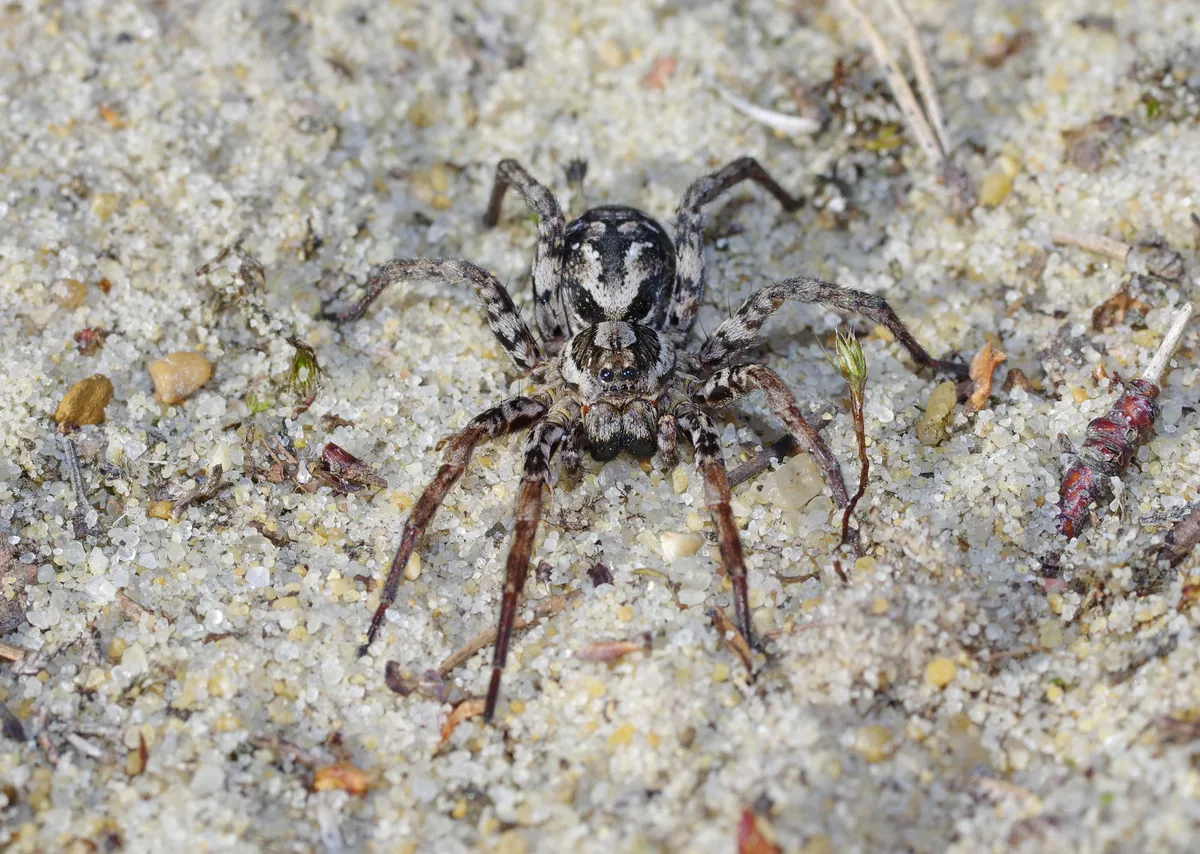The great fox-spider is listed as Critically Endangered and was feared extinct in the UK, last being seen here in 1993.
But spider enthusiast Mike Waite at Surrey Wildlife Trust didn’t give up hope that he might one day find the elusive spider, and after 2 years of persistent searching late at night, his hard work proved not to be in vain.
Thanks to Waite’s perseverance and keen eye, he first found immature spiderlings on the MOD land managed by the Amphibian and Reptile Conservation Trust (ARC), although he was unable to identify them.
Waite was then able to find several mature males and one female great fox-spider, measuring just over 2 inches (55mm) in diameter including the legs, and was able to confirm that great fox-spiders continue to survive in Britain.
“The spider is at the very edge of its range in the UK, which accounts for its super rarity here,” explains Waite. “This formidable-looking creature is an impressive beast, perfectly camouflaged and also largely nocturnal, and for all its size it has been remarkably elusive.”
These amazing arachnids are incredibly agile and fast runners, making them formidable hunters, pursuing their prey across sandy terrain, or over gravel and rocks, before pouncing.
Once they have captured their prey — including beetles, ants, and smaller spiders — they inject them with venom, liquifying the insects’ internal organs. A gruesome but effective tactic.
For shelter, the spiders dig burrows or holes under rocks and logs and make a silk-lined burrow as a retreat for the winter.

Waite plans to continue his search for the spiders in order to gauge the size of their population at the site.
Managed for nature’s recovery, the MOD site is recognised as being nationally important for its populations of rare bird, reptiles and invertebrate species. The discovery of the great fox-spiders here adds further credence to the location as a site of great significance for wildlife.
“The discovery of the great fox-spider shows how amazing the MOD heathland is, not just for spiders, but also for sand lizard, smooth snake, Dartford warbler, nightjar, silver-studded blue butterfly and marsh clubmoss,” commented Rob Free, Weald Reserves Manager at ARC.
“The spider’s rediscovery is a wonderful exoneration of all the incredibly hard work put in by MOD staff, Conservation Group members, ARC staff and volunteers.”